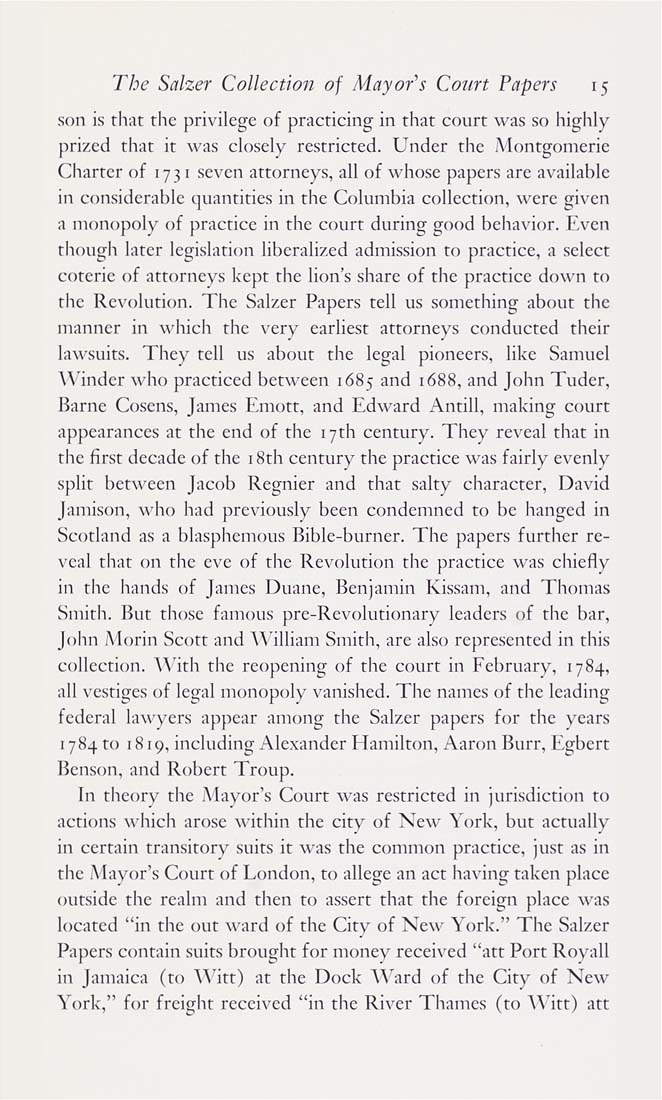Columbia Library columns (v.7(1957Nov-1958May))
(New York : Friends of the Columbia Libraries. )
|
||
|
|
|
|
| v.7,no.3(1958:May): Page 15 |

The Salzer Collection of Mayor's Court Papers 15 son is that the privilege of practicing in that court was so highly prized that it was closely restricted. Under the A'lontgomerie Charter of 1731 seven attorneys, all of whose papers are available in considerable quantities in the Columbia collection, were given a monopoly of practice in the court during good behavior. F.ven though later legislation liberalized admission to practice, a select coterie of attorneys kept the lion's share of the practice down to the Revolution. The Salzer Papers tell us something about the manner in «hich the very earliest attorneys conducted their lawsuits. They tell us about the legal pioneers, like Samuel Winder who practiced between 1685 and 1688, and John Tuder, Barne Cosens, James Emott, and Edward Antill, making court appearances at the end of the 17th century. They reveal that in the first decade of the i8th century the practice was fairly evenly split between Jacob Regnier and that salty character, David Jamison, who had previously been condemned to be hanged in Scotland as a blasphemous Bible-burner. The papers further re¬ veal that on the eve of the Revolution the practice was chiefly in the hands of James Duane, Benjamin Kissam, and Thomas Smith. But those famous pre-Revolutionary leaders of the bar, John Morin Scott and William Smith, are also represented in this collection. With the reopening of the court in February, 1784, all vestiges of legal monopoly vanished. The names of the leading federal lawyers appear among the Salzer papers for the years 1784 to 1819, including Alexander Hamilton, Aaron Burr, Egbert Benson, and Robert Troup. In theory the Mayor's Court was restricted in jurisdiction to actions which arose within the city of New York, but actually in certain transitory suits it wis the common practice, just as in the Mayor's Court of London, to allege an act having taken place outside the realm and then to assert that the foreign place was located "in the out ward of the City of New York." The Salzer Papers contain suits brought for money received "att Port Royall in Jamaica (to A^'itt) at the Dock A^'ard of the City of New York," for freight received "in the River Thames (to Witt) att |
| v.7,no.3(1958:May): Page 15 |







